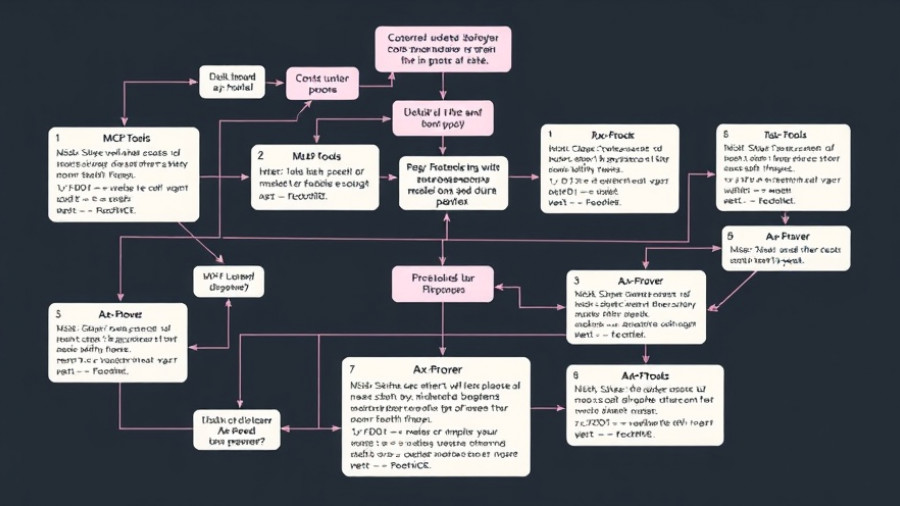
Understanding Anthropic's Hybrid AI Model: A New Frontier in Deep Reasoning
Anthropic is on the verge of launching an innovative hybrid AI model designed to reshape the landscape of artificial intelligence as we know it. This new model, which marries traditional large language model (LLM) functionalities with deep reasoning capabilities, is set to provide developers with an unprecedented level of control over computational resources. By allowing AI to toggle between deep reasoning and rapid responses, Anthropic aims to empower organizations across various industries to operate more efficiently.
What Makes This Hybrid AI Model Unique?
This hybrid model features a groundbreaking 'sliding scale' that enables developers to decide how much computational power they wish to allocate to complex reasoning over simpler language tasks. This adaptability not only offers flexibility in application but also helps manage costs effectively, a vital consideration for enterprises. The hybrid approach allows for in-depth engagement with programming problems, thereby enhancing performance when necessary while conserving resources when a simpler response suffices.
Competitive Landscape: Where Anthropic Stands
As Anthropic prepares to release its highly anticipated AI model, industry competitors are already reacting to the impending launch. OpenAI, with its recent announcement about the upcoming o3-mini model, achieved a parallel advance that also emphasizes a blend of rapid response with reasoning capabilities. This competition underscores a significant trend in the AI field of developing systems that optimize performance and resource management. Such advancements will inevitably lead to a re-evaluation of existing technologies.
Deep Reasoning: The Heart of the Matter
The importance of deep reasoning in AI applications cannot be overstated. Companies are increasingly relying on AI that can not only answer simple commands but also engage in complex problem-solving. Reports suggest that at its maximum reasoning capability, Anthropic's model is poised to excel in tackling extensive programming tasks and handling large codebases. This sophistication is crucial for businesses looking at AI for game-changing operational efficiency.
Implications for Enterprise Applications
The innovative capabilities of Anthropic's upcoming AI model promise a multitude of benefits for enterprise applications. For organizations seeking to integrate AI without incurring excessive costs, this hybrid model represents a versatile solution. The model’s ability to dynamically allocate processing power based on task complexity ensures that enterprises can derive maximum performance without inflating their operational expenses.
A Partnership to Watch: Anthropic and Lyft
A noteworthy partnership soon to unfold is between Anthropic and Lyft. This collaboration is expected to showcase how the new hybrid AI model can enhance customer service communications in a practical setting. As Lyft integrates Anthropic’s Claude, the AI will adjust capabilities to address customer inquiries in real time, demonstrating variable reasoning levels tailored to different user needs. This partnership could potentially position both companies as leaders in applying advanced AI to everyday scenarios.
Expert Opinions on the Hybrid AI Model
Leading researchers in AI have provided varying perspectives on the significance of Anthropic's new hybrid model. Dr. Sarah Chen, AI Research Director at Stanford, underscored the potential for significant cost reductions in enterprise operations—estimating savings of up to 40% through efficient resource utilization. Marcus Thompson, Lead AI Architect at Deloitte, mentioned how the adaptive nature of this model could transform software development practices, promoting flexibility and real-time adjustments.
Future Prospects: The Impending AI Evolution
Looking ahead, the introduction of Anthropic's hybrid AI model could spark widespread changes across various sectors. As more companies start adopting similar technologies, competition will likely prompt further innovations in AI solutions, specifically those that allow for dynamic resource allocations. Meanwhile, with Anthropic's valuation reportedly exceeding $60 billion, there is a strong interest from investors to back technologies that promise scalable efficiency.
This evolution of AI could also highlight the increasing operational roles that AI systems will play in business strategies moving forward, reshaping industries from transportation to finance. The emergence of AI as a transformational force in customer interactions, powered by the capabilities of models like Anthropic’s, is set to redefine efficiency standards across the board.
Conclusion: Embracing Hybrid AI for Enhanced Efficiency
The anticipation surrounding Anthropic's hybrid AI model reveals the appetite for smarter, more adaptable technology in the workplace. By weaving together deep reasoning and traditional AI functionalities, this model not only represents a technical step forward but also sets the stage for more economically sustainable practices within companies. As enterprises increasingly prioritize AI solutions that marry efficiency with flexibility, Anthropic stands ready to lead the charge into a new era of artificial intelligence.
 Add Row
Add Row  Add
Add 




Write A Comment